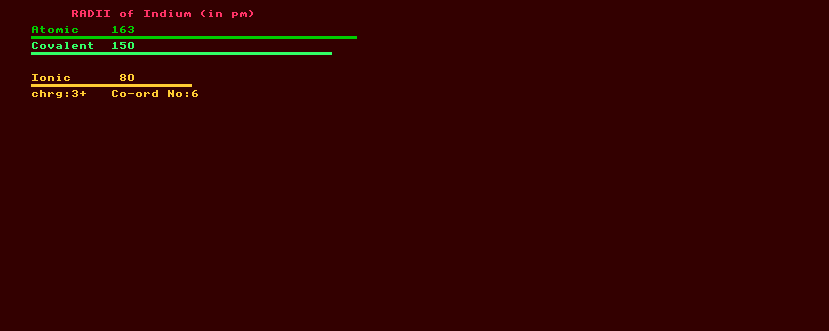

|
HELP on ATOMIC SIZE If known or measurable, the radius of each element is quoted (in pm, 10-12 metres). The atomic radius is half the inter-atomic distance. The covalent radius is quoted for single bonds (Pauling). It is smaller for multiple and polar bonds. The ionic radius is quoted for the highest oxidation number and coordination number. The van der Waals radius is quoted for non-bonding elements like the inert gases, and for halogens. The size of an atom is a very nebulous and indeterminate quantity which depends very much on how it is measured. It is akin to measuring the diameter of a fluffy ball of cotton wool with your eyes closed wearing boxing gloves. One way is to measure the closest distance between two neighbouring atoms in a solid, which yields a value called the atomic radius. But is this really the diameter of a single lone atom? Another way is to measure the distance between two atoms that are covalently bonded to each other. Its value will be shorter for multiple bonds between the atoms. But this is clearly not the size of a lone atom either. Slightly different values will be obtained however it is measured, since an atom is not a solid object, but a small positively charged nucleus surrounded by a hazy cloud of negatively charged electrons which can be deformed by any external influences used to measure it like pressure, light, electrical or magnetic fields. And if that were not all, many atoms are not even spherical, but are multi-lobed and so have no true diameter anyway. However, the above four practical measurements (which cannot all be performed on all the elements) serve a very useful purpose in defining the effective size(s) applicable under varying circumstances.
|
![]()